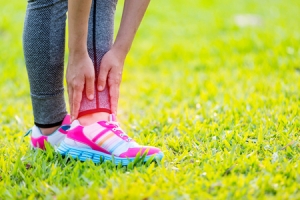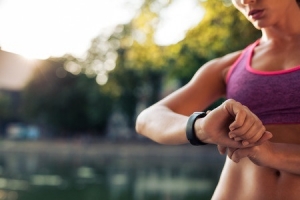Connect With Us
Blogs
Displaying items by tag: custom orthotic device
Common Reasons Exercise Programs Fail
At Superior Foot & Ankle Care Center we know the importance of exercise to your feet as well as the rest of your body. That’s why we applaud patients who make a resolution to get in shape in the New Year. Too often, however, by the time February rolls around many exercise plans have already been shelved. Below are some scenarios that can bring fitness plans to a halt and how to work around them.
“Let’s do this! I am going to work out every day to get in shape fast no matter what it takes.”
Not so fast, or you’ll likely end up with an injury. Achilles tendonitis, ankle sprains, and shin splints are just a few of the conditions that can be caused by doing too much too quickly. Not to mention that an overly ambitious start, especially if you’re out of shape, can lead to fatigue and discouragement before you even really get started. The best bet for long-term success is to do an activity or program that allows you to start slowly and gradually increase the level of your workout.
“I started a running program a few years ago and still have my shoes—yay! I won’t have to go out and buy new ones.”
Footwear is one of the most important factors in the success of an exercise program. Getting fitness shoes that are designed for the sport or activity, you’ll be doing is key. However, foot size can change over time. It’s best to get your foot measured professionally and try your shoes on to make sure they are still comfortable.
“I have a bunion, but I think if I put a pad over it I should be able to exercise without a problem.”
Before starting a new exercise program, it’s always best to consult your general practitioner and also your podiatrist. Our foot doctors, Dr. Victoria Foley or Dr. Constance Ornelas, will examine your feet completely. If you have a chronic foot problem, the podiatrist can recommend shoe styles and make suggestions for how to best accommodate your condition. In some cases, a custom orthotic device can increase comfort and performance.
“I’m going to join a gym—there are lots of good deals available now.”
Take the time to consider your likes and lifestyle. A gym is a good option if you like the classes and machines offered and you need to schedule around your work. Consider if you want a more social setting or if you like to work out alone, if you prefer an indoor or outdoor activity and how much time you can devote to your fitness plan. You’re more likely to stick to a plan that suits your interests and your availability.
If you experience any foot or ankle pain or discomfort when exercising, contact our Long Beach office by calling: (562) 420-9800.
Resolve to Get in Shape—Safely
Is starting a new fitness plan one of your New Year’s resolutions? At Superior Foot & Ankle Care Center we applaud this initiative, but also add a word of caution. We see too many patients who fail to take the necessary steps to ensure that their new fitness plan is safe. Prevent injuries and get your healthy resolution off to a smart start by taking into consideration the following.
Your Current Condition—do you suffer from any chronic foot or ankle disorders such as flat feet, plantar fasciitis or hammertoes? Our podiatrists, Dr. Victoria Foley or Dr. Constance Ornelas, can help you determine the best type of exercise and footwear to accommodate an existing podiatric condition. In some cases, special padding or even a custom orthotic device may be prescribed to make exercise more comfortable.
Long-term Goals—in order to determine the type of exercise to do, you need to know what your goals are. Do you want to lose weight? Have more strength and endurance? Improve flexibility and balance? Your general physician and exercise professionals can help match your goals to fitness activities and sports that will best achieve them.
Gear—in our opinion, your footwear is the most important piece of equipment for a new fitness program. Be sure that you get the right shoes for your sport and that they fit properly. If the foot doctor has recommended an orthotic, be sure it fits in your sports shoes. Look for socks that are not too bulky and ones that wick moisture away from your skin to prevent athlete’s foot and fungal infections.
Now you’re ready to begin. Start slow and gradually increase the degree of difficulty of your work out. If your feet or ankles hurt from your new exercise plan, contact our Long Beach office for an appointment by calling: (562) 420-9800.
6 Shoe Tips for Holiday Shopping
It’s that time of year again—flyers are flooding your mailbox and ads on television are getting you primed for holiday bargains. At Superior Foot & Ankle Care Center we want to make sure that the money you save on holiday shopping isn’t at the expense of your feet and ankles. Your best defense against foot pain and injury is the shoes you wear. Below are 6 tips for choosing the best shoes for long shopping days:
- Go for fit first. Did you know that some studies estimate as many as 90% of people are wearing shoes that are too small for their feet? The longer you’re on your feet, the more your feet swell. If you are starting with shoes that are too small, your shopping day is going to be shortened because your feet will begin to hurt after just a couple of hours of power walking from store to store. It’s a good idea to get your feet professionally measured to ensure the proper size.
- Don’t wear a new pair of shoes. Even if they felt comfortable in the store, a new pair of shoes should be worn for short periods of time at first to make sure there is no rubbing or friction. A marathon shopping day is not the time to try them out. Wear a pair that you know to be comfortable.
- Be light on your feet. Choose a lighter weight pair of shoes for a long day of shopping. The heavier the shoes, the faster your feet will get tired out wearing them.
- Don’t forget your orthotics. If the foot doctor has prescribed a custom orthotic device to be worn in your shoes, it’s to keep your feet properly positioned to help correct a biomechanical problem and avoid foot pain.
- Choose a thick sole. Shock absorption is key to preventing foot pain. Gel insoles and cushioned midsoles can increase comfort by cushioning your steps to protect your feet.
- Prevent injury. High top shoes with solid ankle support and shoes with a grooved tread can help prevent slips and ankle twisting injuries which could bring bargain shopping to a screeching halt. If you do sustain an injury, don’t wait. Contact our Long Beach office (562-420-9800) so that our podiatrists, Dr. Victoria Foley and Dr. Constance Omelas can examine your feet and determine the extent of your injury and the appropriate treatment.



